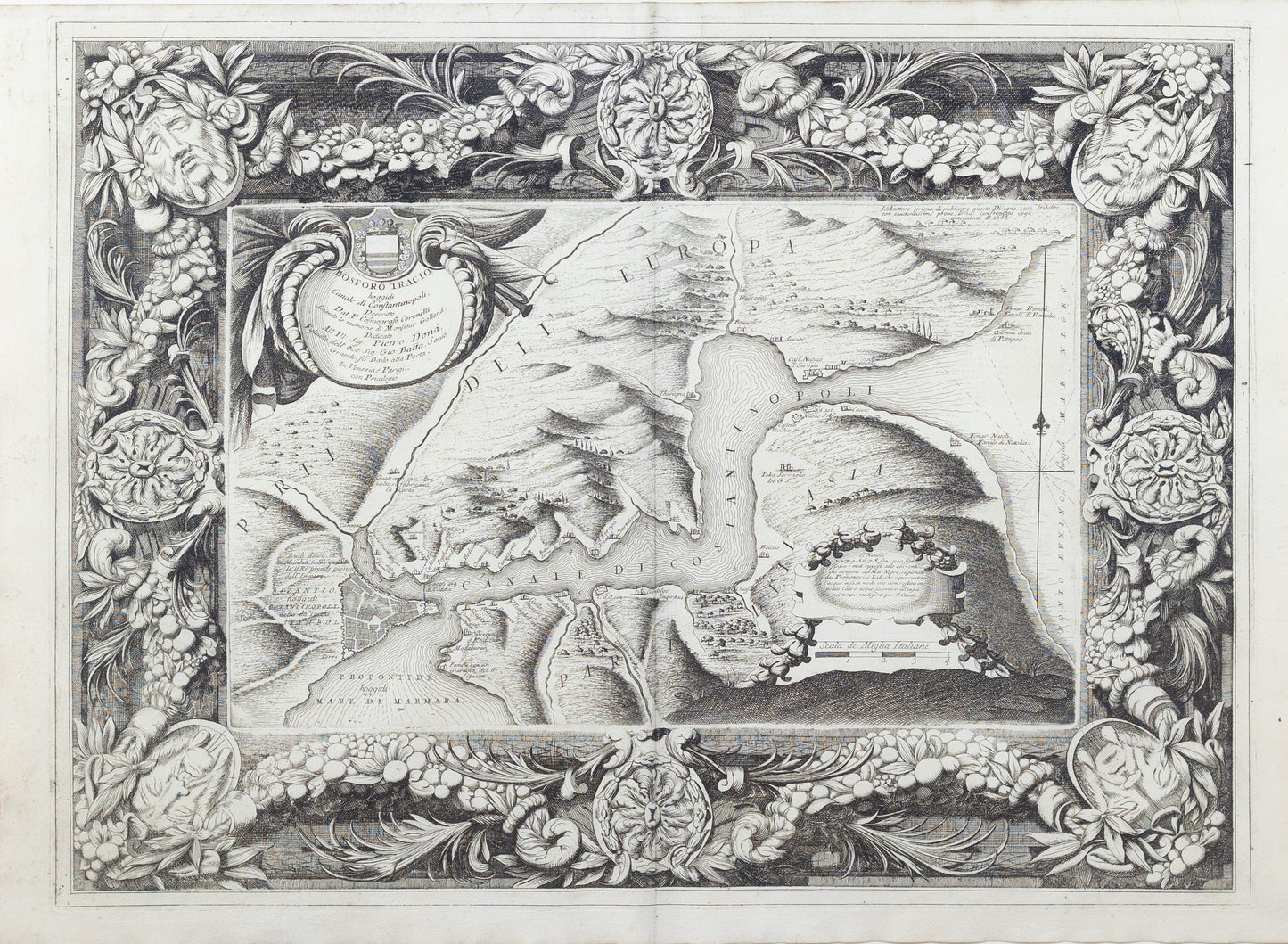from: 1016 Map Inventory
Coronelli, Vincenzo Maria. Bosforo Tracio hoggidi Canale di Constantinopoli. Venice, 1691.
Coronelli, Vincenzo Maria. Bosforo Tracio hoggidi Canale di Constantinopoli. Venice, 1691.
Couldn't load pickup availability
Coronelli
Bosforo Tracio hoggidi Canale di Constantinopoli
Venice, 1691
19 x 26 1/2 inches
[Turkey, Istanbul, Constantinople]
The map titled "Bosforo Tracio hoggidi Canale di Constantinopoli" was created by the renowned Venetian cartographer Vincenzo Coronelli in 1691. This map depicts the Bosporus Strait, a crucial waterway that separates Europe from Asia and connects the Black Sea with the Sea of Marmara. The Bosporus has historically been of immense strategic and economic importance, particularly to the city of Constantinople (modern-day Istanbul), which has served as a critical juncture between Eastern and Western civilizations for centuries.
The Bosporus Strait, as illustrated in this map, has been a vital route for trade, military movements, and cultural exchange throughout history. Constantinople, located on its western shore, was the capital of the Byzantine Empire and later the Ottoman Empire, making this region a focal point of imperial power and religious significance. The map reflects the geopolitical importance of the Bosporus, especially during a period when Venice and the Ottoman Empire were key players in Mediterranean and European politics.
This map was created during a time when Venice was striving to maintain its influence and power in the Mediterranean against the rising Ottoman Empire. The detailed representation of the Bosporus by Coronelli is not just a geographical depiction but also a strategic document that showcases Venetian interest in the region. The accuracy and detail in Coronelli’s work also highlight the era’s advancements in cartography, where maps were essential tools for navigation, trade, and military strategy.
### Vincenzo Coronelli – The Cartographer:
Vincenzo Coronelli (1650-1718) was one of the most distinguished cartographers of his time, known for his detailed and decorative maps and globes. Born in Venice, Coronelli became a Franciscan friar and was later appointed Cosmographer to the Republic of Venice. His work is characterized by its precision, artistry, and the inclusion of elaborate decorative elements that made his maps not only practical tools but also objects of art.
Coronelli was particularly famous for his large, handcrafted globes, some of which were commissioned by European monarchs. His contribution to cartography includes the creation of the first large-scale, detailed maps of various parts of the world, and his atlases were among the most comprehensive of the era. Coronelli founded the first geographical society, the Accademia Cosmografica degli Argonauti, further solidifying his impact on the field of geography.
The "Bosforo Tracio hoggidi Canale di Constantinopoli" map is a testament to Coronelli's meticulous craftsmanship and his role in advancing cartographic science during the late 17th century.


